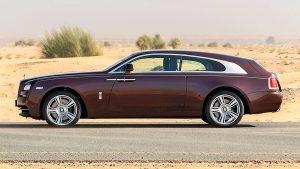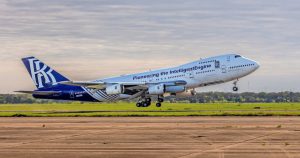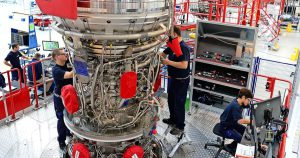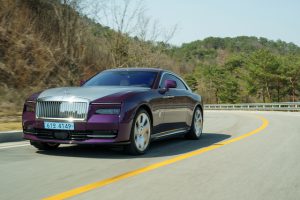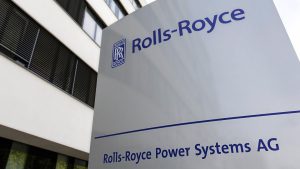Rolls-Royce’s (RR) results for fiscal year 2023 were better than expected. The company recorded higher profit margins due to the strong performance of the civil aviation sector. This data comes after a rise of almost 160% in the market prices of its shares in the last 12 months.
Rolls-Royce said operating profit rose to 1.6 billion pounds (from 938 million pounds), while 2023 revenue rose to more than 15 billion. Now the company expects that profit will reach the figure of 2 billion in 2024 and that it will generate about 1.9 billion in the flow of free money.
Rolls-Royce was helped by an increase in the rate of civil aviation operations, which reached 11.6% in 2023, compared to 2.5% in 2022, driven by a higher percentage of spare parts sales, long-term service contracts, improved pricing and cost effectiveness.
Based on these numbers, Morningstar analysts have raised their price estimate for Rolls-Royce shares from £2.89 to £3.80.
Metrice Morningstar for Rolls Royce
– Fair value: 3,80 GBP
– Morningstar Rating: ★★★
– Economic Moat: Medio
– Uncertainty rating: Alto
What is behind the rally Rolls-Royce
For Loredana Muharremi, equity analyst at Morningstar, the 160% growth in Rolls Royce’s share price can be attributed to corporate restructuring.
Since 2016, the company’s return on invested capital has been lower than its weighted cost of capital. The company faced problems even before the disaster, due to problems with the Trent 1000 engine and poor capital allocation decisions.
For Muharremi, one of Rolls-Royce’s biggest strategic mistakes was its exit from the small-capacity aircraft market in 2012, when it sold its 37.5% stake in International Aero Engines, the V2500 engine manufacturing venture.
“Between 2008 and 2017, Rolls-Royce focused on major investments to gain market share, creating seven new engines and increasing manufacturing capacity, and R&D investment reached 10% of sales, from 6% of competitors exposed to narrow growth – the aircraft market, without management providing a clear way of how to recover the investment, due to the decrease in the market of various types of aircraft,” Muharremi added.
However, with the appointment of Warren East as CEO in 2015 (he resigned at the end of 2022), the direction was changed. Among the main changes, there was the exclusion of non-strategic activities.
“This crisis and its impact on the demand for passenger jets has added further impetus to Rolls-Royce’s restructuring plan, which has resulted in annual cost savings of $1.3 billion through measures such as job reductions and site consolidation. production,” the analyst said.
“These restructuring efforts resulted in 9,000 job cuts, representing approximately 30% of the civil aerospace sector workforce.”
Muharremi also notes that Rolls Royce has reduced R&D spending to 5% of sales, to shift the focus towards next-generation engines and low-carbon alternatives.
“We believe the restructuring, along with new consumption targets and a new mix of research and development, was necessary to align the group with expectations of reduced medium-term demand for its range of wide-body engines,” said a Morningstar analyst.
“Furthermore, the company used the Covid period to focus on increasing engine performance in terms of durability and reliability, solving many of the problems that had existed until then.”
Why was the fair value of Rolls Royce adjusted upwards?
Muharremi says the estimated fair value of Rolls Royce was increased because its business performance exceeded expectations.
“The company has already reached 40% of its medium-term goals in terms of performance improvement”, explains the analyst.
“Thanks to excellent engine performance, the company exceeded our expectations for commercial results, as it was able to negotiate higher than expected prices on new and expiring contracts.”
Rolls Royce has a very high percentage of long-term contracts based on revenue per flight hour (RPFH), so improved engine performance has led to greater profitability.
Efficiency gains have allowed the company to negotiate higher prices. With this in mind, Muharremi expects price increases to continue as the company continues to deliver better engine performance and mix changes towards new RPFH contracts (earnings for flying hoursrevenue per hour of travel) more profitable.
An economic way
Muharremi gives the company a Moat of Medium, which is defined by its intangible assets, its technical skills and its engineering expertise in the aerospace and defense sectors.
The civil aviation sector generated 48% of total revenue in 2023. Of this segment, 70% came from large engines and 28% from aviation and regional markets. This is because the industry has high barriers to entry, represented by strict regulatory requirements and stringent safety and reliability qualification processes.
Only four companies, including Rolls-Royce, have the technological expertise and capability to design, manufacture and service large commercial aircraft engines.
“Engine production requires large start-up capital, large investments in R&D and skilled workers,” explains the analyst. “Rolls-Royce employs a large team of skilled engineers and invested approximately 10% of its sales in R&D from 2010 to 2017 to obtain 1,994 patents. The aerospace industry is expected to see a recovery due to the increase in passenger revenue measurement – kilometer after tragedy”.
Muharremi also awarded Rolls Royce Moat of Medium for his defense business as well. Contracts won in the defense sector are usually long-term, which creates high barriers to entry. In this market, service business accounts for 54% of total sales.
“Unlike the commercial aerospace industry, the defense industry faces the challenge of centralizing maintenance due to the large geographical dispersion of customer assets,” says the expert. “As a result, most service revenue comes from selling parts to a fragmented base of third-party service contractors.”
Risk and uncertainty
Morningstar gave Rolls-Royce a High Uncertainty Rating because of the cyclical nature of the aerospace industry, its link to the global economy and uncertainty based on the risk of overconcentration in the round-trip plane segment.
According to Muharremi, Rolls-Royce’s business faces high turnover, as approximately 45% of the company’s consolidated revenue and 34% of the company’s EBITDA come from its civil aviation business.
“Furthermore, airline profitability is closely linked to factors such as global economic growth and fuel prices that may cause airlines to reduce their budgets, reduce orders or postpone maintenance, all of which can be damaging,” says the expert. . .
Muharremi is confident that Rolls-Royce can recover in the medium term, as the impact of each cycle of decline in air traffic has been shorter and less severe than the previous one. Additionally, the company’s RPK figures have consistently outpaced GDP growth.
The risk of weaker-than-expected demand for various types of aircraft due to order cancellations, early retirements and reductions in flight hours could have a negative impact on the company’s results. In addition, inflationary and supply-side problems, fueled by the war in Ukraine, could hurt exports and profit margins in the near term. Despite this, however, Muharremi believes that Rolls-Royce has the ability to continue to be profitable, even if it may face a difficult period in the short term.





